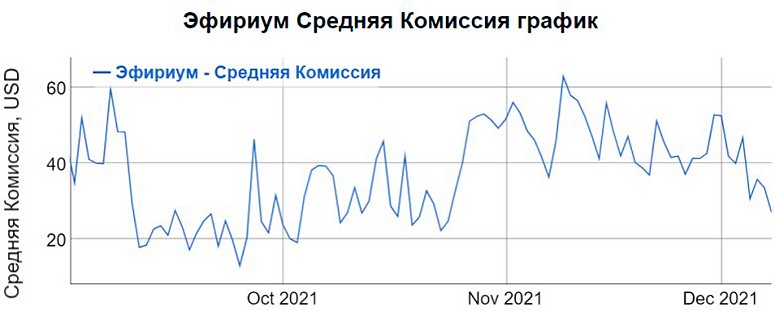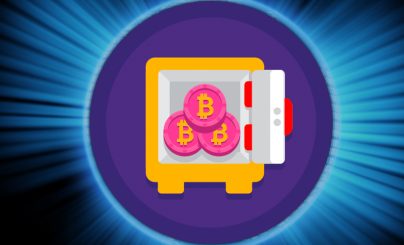Each blockchain has a specific security method. Bitcoin is based on the Proof-of-Work (PoW) algorithm. It has rules for issuing new coins, confirming transactions, etc. PoW has a number of limitations, such as low scalability and high energy consumption. To avoid such disadvantages, cryptocurrencies are transferred to the Proof-of-Stake (PoS) protocol. This is an alternative way of confirming the work done, which uses digital assets instead of mining hardware.
What is Proof-of-Stake
It is a security method in cryptocurrencies where the probability of creating a new block depends on the current balance and the total number of assets. In simple words, Proof-of-Stake is the ability to earn rewards by owning a certain coin.
Preconditions of appearance
The search for new solutions in the field of PoS algorithm is related to the disadvantages of Proof-of-Work:
- High energy consumption. In February 2021, researchers concluded that the Bitcoin network consumes more electricity than Argentina. This leads to increased air pollution from mining new blocks.
- 51% attack rate. If the power of one user or pool reaches 51%, it can create a parallel network. It will have different transactions and a modified blockchain. This will allow double spending, for example, send bitcoins to the user and after confirmation “pick up” them.
- Arms Race. On PoW, miners are constantly increasing their processing power. Older equipment with low hash rate eventually stops receiving new blocks. The total power becomes larger, as well as power consumption. As a result, miners have to withdraw some of the capital they have received, which negatively affects the exchange rate.
Proof-of-Stake solves such problems. The risk of a 51% attack remains, but this becomes financially disadvantageous. To begin with, the user accumulates more than half of the assets in the share, and then risks the price. Due to the 51% attack, the price of the coin will fall, and the main holder will suffer the most.
Peercoin was the first cryptocurrency that uses the PoS method. Then Nxt, Blackcoin and ShadowCoin started to implement the algorithm.
5020 $
bonus for new users!
ByBit provides convenient and safe conditions for cryptocurrency trading, offers low commissions, high level of liquidity and modern tools for market analysis. It supports spot and leveraged trading, and helps beginners and professional traders with an intuitive interface and tutorials.
Earn a 100 $ bonus
for new users!
The largest crypto exchange where you can quickly and safely start your journey in the world of cryptocurrencies. The platform offers hundreds of popular assets, low commissions and advanced tools for trading and investing. Easy registration, high speed of transactions and reliable protection of funds make Binance a great choice for traders of any level!
Principle of operation
In PoW, miners act as nodes – they verify and confirm transactions. Participants gather in one pool to increase the chances of finding a block and receiving a reward. Proof-of-Stake works on a similar principle.
In Proof-of-Stake, validators are responsible for issuing blocks. They take part in staking and freeze a portion of the coins. The cryptocurrency algorithm randomly selects one validator from the total number. The PoS protocol takes into account one or more factors:
- The amount of assets.
- The duration of the validator’s participation.
- Time since the last reward, etc.
The working principle of different cryptocurrency networks differs. There are hybrid variants of PoS:
- Proof-of-Activity. Cryptocurrency algorithm offers a hybrid model of creating new blocks with simultaneous use of PoW and PoS.
- Proof-of-Burn. A variant of staking in which, in order to find a block, the validator sends funds to a random address obtained by hashing. No one has access to this wallet, so the coins are simply burned.
- Proof-of-Research. Another variant of the hybrid use of PoW and PoS. Users of the BIONIC computing platform get a share for the hardware provided. The PoS cryptocurrency algorithm additionally pays for participation.
What the validator does
Finding a new block is the responsibility of one of the network participants. In PoS, validators take on this role. To become a validator, you need to fulfill several conditions:
- Block a certain number of coins in the network. For example, validators are required to have 32 ETH to participate in Ethereum 2.0.
- Provide the computing power to install the client and run the node. Unlike PoW, all validators are subject to common minimum hardware requirements. Greater computer power does not affect the reward.
Further, each validator participates in a lottery. The Proof-of-Stake algorithm randomly determines which of all users will receive cryptocurrency for a new block.
The validator keeps the blockchain running by storing coins, while the miner keeps the blockchain running by solving complex problems.
What is a masternode
It is a node that is responsible for storing data on the blockchain. The server records information about each transaction starting from block zero.
The list of validators can change. Old users leave and new users take their place. To ensure data integrity, information is stored using masternodes that are permanently connected to the blockchain.
Realizations
Proof-of-Stake cryptocurrencies vary. Developers of new blockchains are changing the basic principles of the consensus algorithm to create networks that are more compatible with the changes.
Peercoin
This is the first PoS-based cryptocurrency. However, the issuance of the zero block was done using Proof-of-Work. After the transition to PoS, a formula is responsible for the payment of rewards:
Hash (prevBlocksData, timeInSeconds, txoutA) ≤ d0 * coins(txoutA) * timeweight(txoutA),
where:
- prevBlocksData – data about the previous block.
- timeInSeconds – current time.
- txoutA – transaction result.
- d0 – constant that controls generation of blocks every 10 minutes.
- coins(txoutA) – number of unspent assets.
- timeweight(txoutA) – time elapsed since the last block.
CoA
Chains of activity is a blockchain lottery. It goes through a follow-the-satoshi procedure – the satoshi is the smallest unit in the Bitcoin network.
The PoS algorithm selects a random number between zero and the total number of cryptocurrencies in circulation. It then searches for the participant who owns the specified unit. Accordingly, the more coins a user keeps, the higher their chances of getting the cryptocurrency in the lottery.
Dense-CoA.
This is an alternative variant of the previous algorithm. In classic CoA, a single participant is ultimately responsible for generating blocks, whereas in the hybrid format it can be a group of users.
Differences from PoW
PoS has become the next stage in the development of cryptocurrencies. When comparing it to the PoW algorithm, a number of differences can be found.
| Proof-of-Stake | Proof-of-Work |
|---|---|
| For mining, it is enough to have a certain cryptocurrency. | The generation of new blocks occurs through computing power. |
| Participants are interested in accumulating coins. If they believe in the network, they have no reason to withdraw cryptocurrency. | Miners have to sell bitcoins or other assets to pay for energy costs and new equipment. |
| In Proof-of-Stake mining, rewards are randomly distributed among validators because the algorithm can take into account not only the amount of coins but also other data. | In PoW, miners compete against each other. The participant who is the first to find a new block is rewarded. The more computing power a miner has, the higher the chances of a payout. |
| PoS consumes less energy than PoW. This is because the number of validators may be limited and the servers have minimal requirements. | Energy consumption in PoW gradually increases due to competition between network participants. Miners are interested in using more powerful equipment to find blocks more often. |
Mining and earning in PoS
This process is called steaking – alternative coin mining. The user does not need to buy expensive equipment to discover blocks, and third-party validators can be used. Staking is similar to deposits. The specified rates allow you to calculate the yield, but there are complications.
Suppose a user participates in the Solana cryptocurrency staking. According to the StakingRewards website, validators earn 6.37%. If the user sent 100 coins to staking, they will earn 6.37 SOL in 1 year. However, the earnings will decrease when the value of the cryptocurrency drops. If the price of the coin drops a lot, it won’t matter how much interest the developers offer.
Popular PoS coins
There are more than 264 cryptocurrencies with the Proof-of-Stake algorithm on the market. Their average rate is 10.47%. In the table is the list of the most popular cryptocurrencies as of December 8, 2021, according to StakingRewards.
| № | Name | Rate | Rate | Number of coins in staking |
|---|---|---|---|---|
| 1 | Solana | $191,36 | 6,37% | 76,08% |
| 2 | Ethereum 2.0 | $4404,15 | 5,11% | 7,10% |
| 3 | Cardano | $1,39 | 5,65% | 70,35% |
| 4 | Terra | $70,52 | 7,57% | 36,98% |
| 5 | Avalanche | $90,46 | 9,36% | 59,35% |
| 6 | Polkadot | $29,34 | 13,92% | 53,31% |
| 7 | Algorand | $1,68 | 4,64% | 46,58% |
| 8 | Binance Coin | $590,07 | 19,46% | 77,81% |
| 9 | Internet Computer | $31,33 | 10,41% | 49,78% |
| 10 | Polygon | $2,48 | 13,59% | 27,76% |
Ethereum 2.0 and Proof-of-Stake
Efirium along with most other cryptocurrencies on PoW has relatively low bandwidth. With smart contracts, developers are creating more new projects that are straining the network. If the problem is not solved, it may not be profitable to work with Ethereum in the future due to huge commissions.

The first major update on the transition to PoS happened on December 1, 2020. The blockchain began the zero phase of testing Ethereum 2.0. Users now have the opportunity to become a validator – to do this, you need to freeze 32 ETH. When the transition to an alternative algorithm will end, it is unknown. According to preliminary predictions, the Etherium network may abandon Proof-of-Work in 2022.
Advantages and disadvantages of the algorithm
The new Proof-of-Stake algorithm cannot be called a panacea for the virtual currency market. The system has both its advantages and disadvantages.
| Advantages | Disadvantages |
|---|---|
| Networks with PoS have a large bandwidth. After the transition of Etherium to a new algorithm, the blockchain will be able to process up to 100 thousand operations per second. At the end of 2021, the network throughput is set at 15 procedures in the same amount of time. | PoW-based blockchains are more popular. Despite the shortcomings of Proof-of-Work, Bitcoin still leads the market. |
| Incentive for the community to store cryptocurrency. The PoS blockchain rewards users who hold coins in accounts. If they see the promise of the technology, they have no reason to withdraw cryptocurrency from the network. | Centralization. Because of the accumulation of funds, PoS leads to the creation of a large number of whales – large holders of coins. Some blockchains use voting, because of which such participants have a stronger influence on the further development of the network. |
| Reduces the cost of mining. Stacking does not require expensive equipment. Along with this, electricity costs fall. | Inflation. Some PoS cryptocurrencies have unlimited issuance. As a solution, developers offer coin burning. |
| The network is more stable in the face of a 51% attack. Double spending loses the potential benefit, as the owner of the larger stake will suffer more than the rest of the participants. | |
| Lower entry threshold. Some PoS validators act as a pool and offer to participate in staking with any amount. |
Outlook
Developers are looking for a balance between transaction processing speed and blockchain security. Proof-of-Work coins have disadvantages, so their capitalization will not exceed bitcoin. However, BTC has the disadvantages of PoW.
In 2021, Tesla refused to accept bitcoins for payment because of the negative impact of mining on the environment.
It is enough to look at popular cryptocurrencies by capitalization size. Binance Coin, Solana, Cardano, Polkadot and Terra are all powered by PoS. Very soon Ethereum will be added to them, so the alternative algorithm of coin mining will dominate the market. Users have positive expectations regarding the transition to Ethereum 2.0. This is evidenced by the exchange rate of the coin, which over the past year has grown relative to bitcoin from 0.03 to 0.073 BTC.
Summary
When Bitcoin first appeared, the first miners had an advantage. The low hash rate of the network allowed mining on ordinary computers, while paying 50 BTC for 1 block. Today, bitcoin mining requires expensive hardware – ASICs.
Proof-of-Stake has given the community a second wind. Becoming a part of the blockchain has become easier, no matter how big the user’s stake is or whether he has a powerful network for mining. You just need to find a promising coin for staking.
Frequently Asked Questions
❓ Why is the Proof-of-Stake algorithm better than Proof-of-Work?
Scalability is one of the key drawbacks of PoW. Ethereum has low bandwidth in its current state, and PoS allows you to increase it many times over.
🔎 Minimum amount for staking?
To participate in PoS mining, one seeks the help of vendors. For example, there is no minimum amount restriction for BNB steaking on the Binance exchange.
💰 How much do people earn from steaking?
The range of interest rates is from 5% to 150% per annum.
✅ Who can participate in steaking?
The procedure by Proof-of-Stake algorithm is available to all users.
💡 The best coin for steaking?
It is difficult to determine which cryptocurrency will be the most profitable in the future. It’s better to reduce your risks by dividing your capital among several coins.
Is there a mistake in the text? Highlight it with your mouse and press Ctrl + Enter.
Author: Saifedean Ammous, an expert in cryptocurrency economics.















